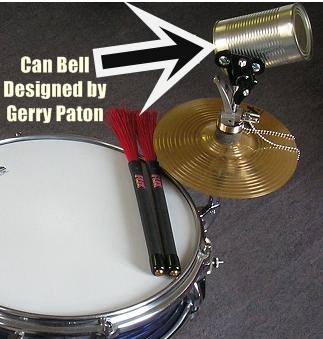Although the site is new, he has two sections that are well worth reading:
- Articles containing one of the best researched pieces on early brushes and how they were played, and one on the history and evolution of the original brushes
- Tips and Tricks that contain two (for now) articles on making brush-friendly instruments and playing techniques
What makes this article particularly valuable is Mr. Paton's view of the roots of brush playing departs from conventional thought, which is tap dancing. In the book that accompanies The Art of Playing Brushes, Mark Griffith wrote a chapter titled A History of the Brushes in which he delves into the relationship between tap dancing and brushes. Also, on his instructional DVD, Brushworks - The DVD, Clayton Cameron devotes a segment to the same relationship. The arguments are compelling and valid. However, Mr. Paton cites a deeper source: shoe shine boys who employed their individual rhythms in brushing down their customers with whisk brooms after they shined the shoes. He backs this up with copious citations within the article. He also traces the development and evolution of suitcase drumming in which brushes were used, as well as the importance of barbershops as musical centers of gravity and where some of the whisk broom rhythms were born and evolved. In the latter it appears that Louisiana was particularly important. The irony is the pioneering New Orleans drummers, such as Louis Cottrell, Sr and Baby Dodds eschewed brushes.
In addition to the roots of brush playing, this article also traces back the development of the brush itself. The design of the original brushes - indeed, the brush itself - was a fly swatter circa 1895. That device's history is contained in the second article in the articles page titled, What Swat: a guide to early wire brushes. If you are interested in the history of brushes and brush playing, Mr. Paton's impeccable research and excellent writing add significantly to the history and body of knowledge.
The Tips and Tricks page is devoted to more practical aspects of brushes: playing them and novel devices to break through the limitations of percussion instruments. For example, Mr. Paton has designed a Canbell that has the sensivity for brush playing that is difficult to achieve with a cow bell. The device looks like this:

Full instructions for making your own are provided in Making a Canbell. The other article on this page shows how to cross stick with brushes.
Based on the content already on this new site I anticipate more well researched and/or thought out articles and tips from Mr. Paton. If you play brushes or are interested in mastering them I highly recommend visiting and bookmarking the site.
No comments:
Post a Comment